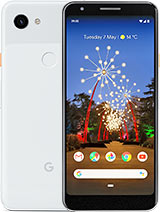Google PIXEL 4: Massive Leak Reveals All By PhoneArena
Google just confirmed it will be using radars on the upcoming pixel for series hello, internet. My name is Vic with fawn area, and we have just seen the biggest league of the upcoming pixel for smartphones, showing one of the Falls in real life, with the new design, including the big bezel at the top and the square camera on the back, and while the pixel for shapes up to be your typical 2019 flagship in terms of specs, with the Snapdragon 855 chip and upgrading Ram, a slightly bigger battery and so on, it aims to revolutionize the way you interface with your phone with gestures built right in that top bezel is the project sold radar solely is the name of the chip and, as Google describes it. It is a new sensing technology that uses miniature radar to detect touchless gesture interactions. Now Google's successful miniaturization of the technology fits in a sole chip that is as small as a pinkie nail. Yet it works on the same principle as the big flight radars on airplanes. This was precisely why the FCC didn't let the sole chip fly until December 31st of 2018, but if granted Google a waiver from some of its requirements for radars in the commercial 57 to 64 gigahertz frequency bands after receiving that important clearance, Google could finally implement the radar and software in the phone that can track, submit a meter motion and high speeds with great accuracy.
That's a quote. The sole chip does it by pushing out electromagnetic waves in a broad sweep that gets reflected back to the tiny antenna inside a combination of sensors and software algorithms that accounts for the energy. These reflected beams carry the time they needed to come back and how they change on the way. Now, with this being able to determine the object's characteristics and dynamics, including its size, shape orientation, material, distance and even velocity, and if this sounds terribly complex, it is because it kind of is put simply. This radar is able to capture much, much more data about gestures and movements than a typical 3d.
Camera can, and it is far more precise. What this precision allows is a brand-new kind of gesture navigation that doesn't even require you touching a screen and because sold is a radar, it works both during the day and at night. Now, apart from that, we also know that the two pixel four phones will both get 90 Hertz displays, with that same high, refresh rate that we saw and one plus seven pro, and that we thought made a big impact in terms of smoother and faster performance, hugely appreciated. Unfortunately, there are also a few disappointments in the lease for the pixel, for the pixel for Excel is said to get a 3700 amp hour battery bigger than before, but still much smaller than the battery and phones like the Huawei, P 30 pro or Samsung Galaxy Note templates. The other shortcoming is in the storage Department first, just like on previous pixel phones.
You will not have support for micros cards, but that's kind of expected. The letdown is the amount of on-board storage said to remain at just 64 gigabytes for the base version of the pixel for way less than most flagship. These days on the back of the phone, you see the new square camera bold yourself slightly and looks much more capable just based on size, in addition to the excellent main camera here, you'll get a secondary two times, zoom telephoto lens that will come in handy for portrait shots, and you also get a time-of-flight depth sensor onboard. We also expect a version 2.0 of the excellent night sight mode that captures incredible pictures at night and, of course, the pixel four will arrive with the latest Android 10 version and the promise for three years of timely software updates, something that you never get on any other Android phones. The series is expected to get officially unveiled in early October and the actual release should happen a week or so after the announcement this year.
Google does indeed bring a lot to the new soles, but let's see if radars and gestures are what will finally help it break through the strong competition.
Source : PhoneArena











![OPPO A94 Unboxing [AWESOME TOOL FOR VLOGGERS]](https://img.youtube.com/vi/9BQE3nSrpGs/maxresdefault.jpg )














